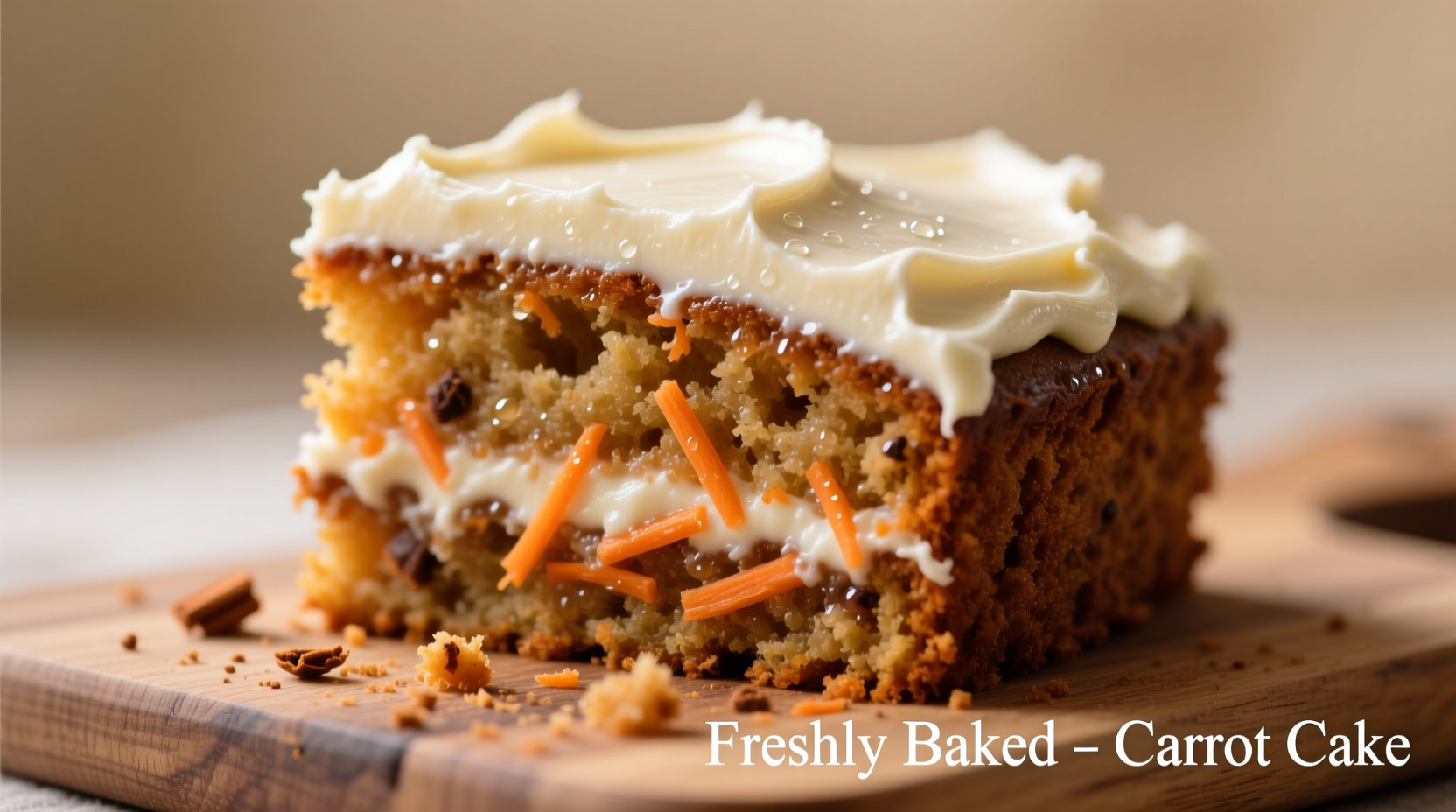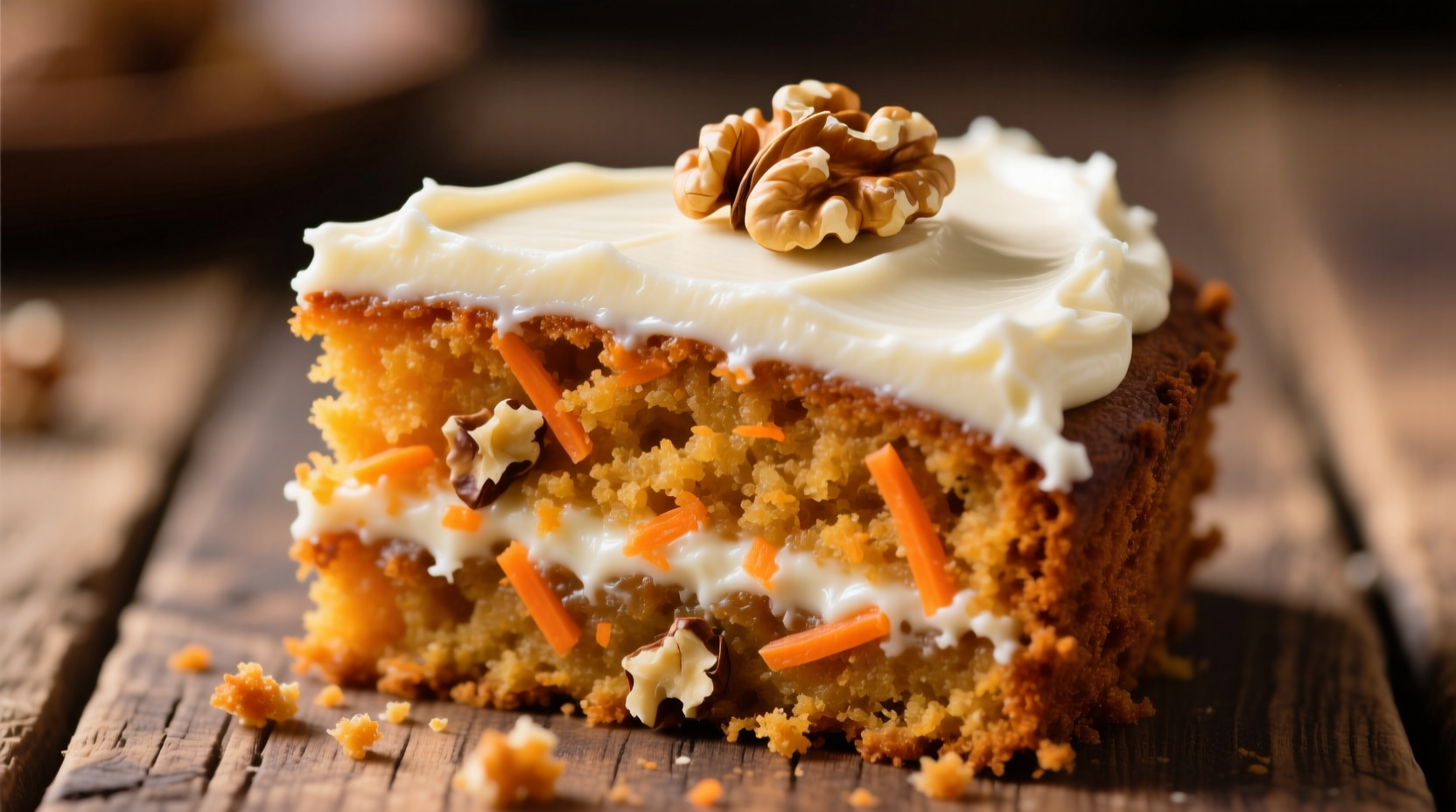Ever wondered what does carrot cake taste like when you've never tried it? You're not alone. Many people hesitate to try carrot cake because they imagine it'll taste like eating raw carrots in dessert form. But here's the truth: carrot cake delivers a complex flavor experience that's nothing like biting into a crunchy carrot stick. This beloved dessert combines warm spices, subtle sweetness, and moist texture to create a uniquely satisfying treat that has nothing to do with the vegetable's raw flavor.
The Core Flavor Profile of Carrot Cake
Carrot cake's distinctive taste comes from a carefully balanced combination of ingredients. The carrots themselves—when properly prepared—contribute moisture and a subtle earthy sweetness rather than a pronounced vegetable flavor. The real stars are the warm spices that transform this dessert into something special.
| Key Flavor Component | Primary Taste Notes | Contribution to Overall Flavor |
|---|---|---|
| Spice Blend | Warm cinnamon, subtle nutmeg, hint of ginger | Creates the signature "spiced cake" profile that defines carrot cake |
| Carrots | Earthy sweetness, subtle vegetal notes | Provides moisture and depth without overpowering vegetable flavor |
| Cream Cheese Frosting | Tangy, rich, slightly sweet | Perfectly balances the spices and adds luxurious texture contrast |
| Nuts (typically walnuts or pecans) | Buttery, toasty, slightly bitter | Adds textural contrast and nutty complexity to the flavor profile |
Why Carrot Cake Doesn't Taste Like Raw Carrots
One of the most common misconceptions about carrot cake is that it tastes like eating carrots for dessert. The reality is quite different. When carrots are grated and baked into cake batter, their natural sugars caramelize during the baking process, transforming their flavor profile completely. According to culinary research from the US Department of Agriculture, the natural sugars in carrots become more pronounced when cooked, while the raw, somewhat bitter notes diminish significantly.
The amount of carrots used in a standard carrot cake recipe (typically 2-3 cups per 9x13 inch pan) contributes primarily to moisture and structure rather than dominating the flavor. Professional bakers at the King Arthur Baking Company confirm that the spice blend is actually more prominent in the overall flavor profile than the carrots themselves.

The Evolution of Carrot Cake Flavor
Carrot cake as we know it today has evolved significantly over time, which explains its distinctive flavor profile:
- 1940s-1950s: Carrot cake emerged as a resourceful way to use available ingredients during sugar rationing, resulting in less sweet versions with more pronounced carrot flavor
- 1960s-1970s: The modern version developed with increased sugar content and the addition of cream cheese frosting, creating today's signature sweet-spiced profile
- 1980s-Present: Recipe refinement focused on perfecting the spice balance and moisture content, leading to the consistently delicious version we enjoy today
Sensory Experience: What to Expect When You Take a Bite
When you take your first bite of quality carrot cake, here's exactly what happens to your palate:
- Initial impression: The tangy cream cheese frosting hits your tongue first, providing a pleasant contrast to the expected sweetness
- Mid-palate: Warm spices (cinnamon, nutmeg, ginger) emerge, creating that comforting "spiced" sensation
- Background notes: A subtle earthy sweetness from the carrots provides depth without overwhelming the other flavors
- Texture experience: Moist, tender crumb with occasional nutty crunch from walnuts or pecans
- Finish: A clean, slightly sweet aftertaste that leaves you wanting another bite
Factors That Influence Carrot Cake Flavor
Not all carrot cakes taste exactly the same. Several factors affect the final flavor profile:
- Spice ratios: Too much cinnamon can overpower other flavors, while balanced spices create harmony
- Carrot preparation: Finely grated carrots distribute flavor more evenly than coarsely grated
- Frosting quality: Proper cream cheese to butter ratio affects the tangy-sweet balance
- Baking time: Overbaking dries out the cake, concentrating sweetness and reducing moisture
- Additional ingredients: Pineapple adds tropical sweetness, while raisins contribute chewy texture and concentrated fruit flavor
How Carrot Cake Compares to Other Popular Cakes
If you're familiar with other cake varieties, here's how carrot cake stacks up:
- vs. Spice cake: Carrot cake shares similar spices but has greater moisture content and earthy notes from the carrots
- vs. Vanilla cake: Much more complex flavor profile with warm spices rather than simple sweetness
- vs. Chocolate cake: Lighter in texture with different flavor dimensions—earthy-sweet rather than rich cocoa
- vs. Red velvet: More pronounced spice notes and earthy depth compared to red velvet's subtle cocoa and buttermilk tang
Getting the Best Carrot Cake Experience
To fully appreciate what carrot cake tastes like, follow these practical tips:
- Allow the cake to sit for 24 hours after baking—flavors meld and deepen overnight
- Serve at room temperature to allow all flavor notes to express themselves fully
- Pair with coffee or tea to complement the warm spices
- Look for cakes with visible spice specks in the crumb—they indicate proper spice distribution
- Avoid versions where the frosting completely overwhelms the cake itself
Common Misconceptions About Carrot Cake Flavor
Let's clear up some persistent myths about carrot cake's taste:
- "It tastes like eating vegetables": The baking process transforms the carrots' flavor completely
- "It's just like pumpkin spice": While similar spices are used, carrot cake has distinctive earthy notes pumpkin lacks
- "The carrots are just for moisture": They contribute subtle flavor depth beyond just moisture
- "All carrot cakes taste the same": Recipe variations create significantly different flavor experiences











 浙公网安备
33010002000092号
浙公网安备
33010002000092号 浙B2-20120091-4
浙B2-20120091-4